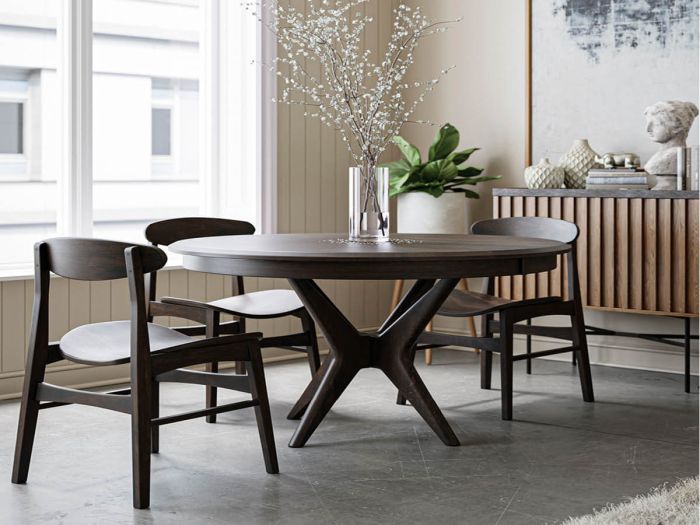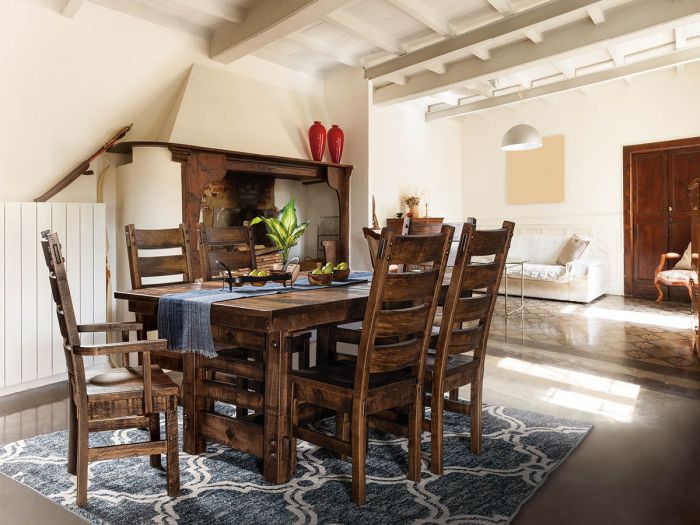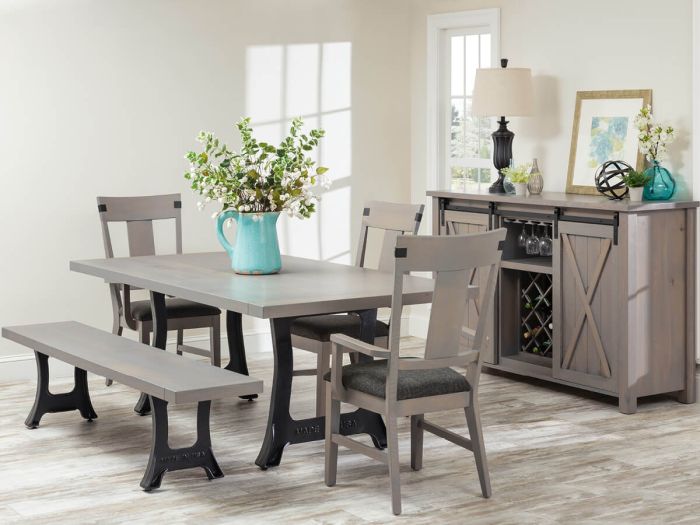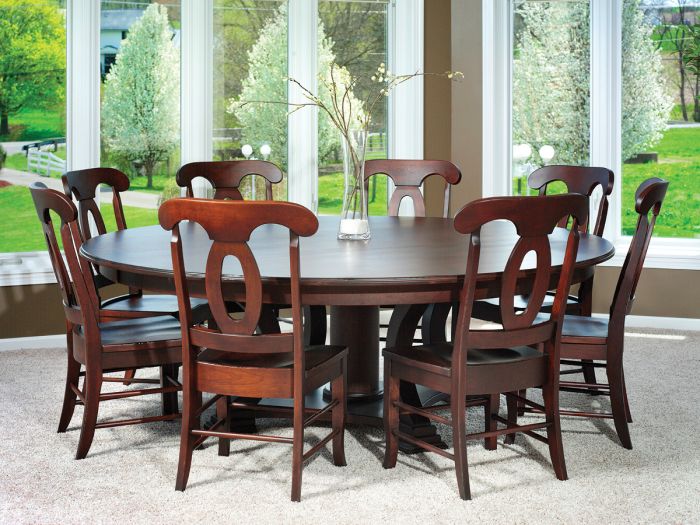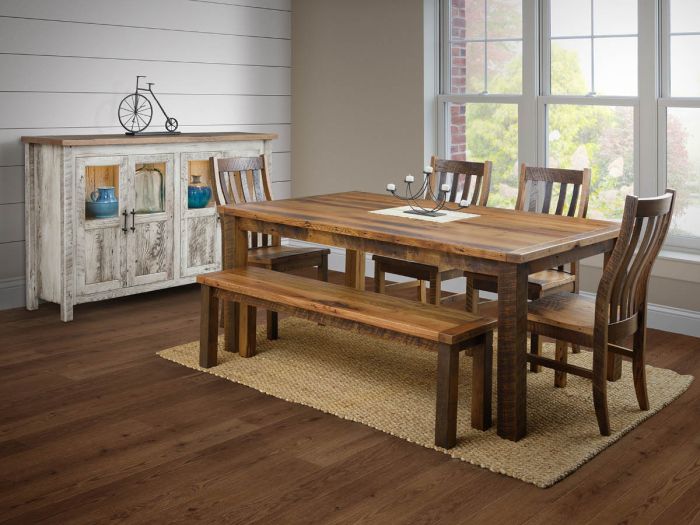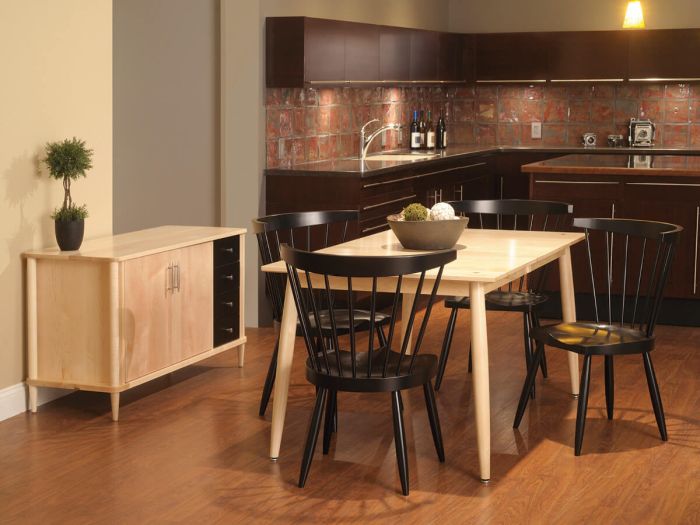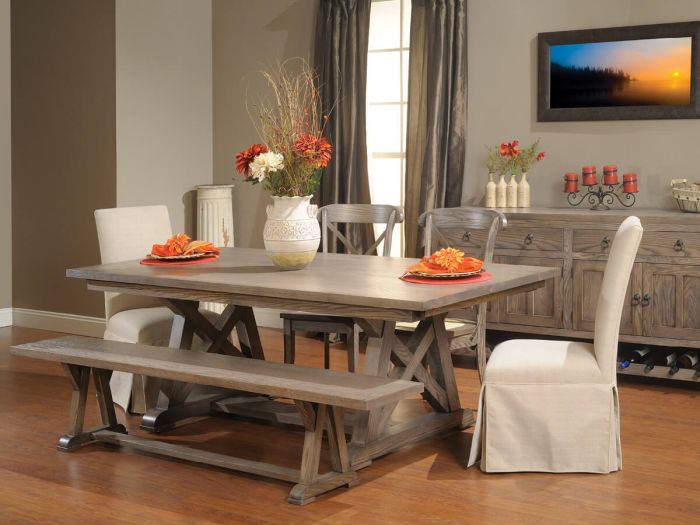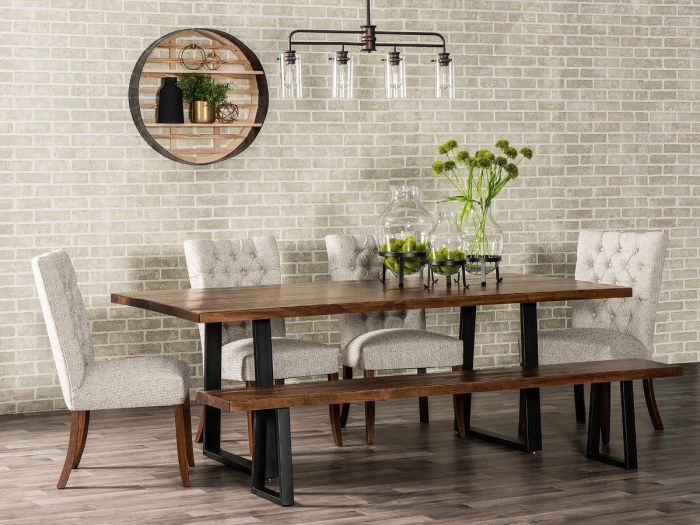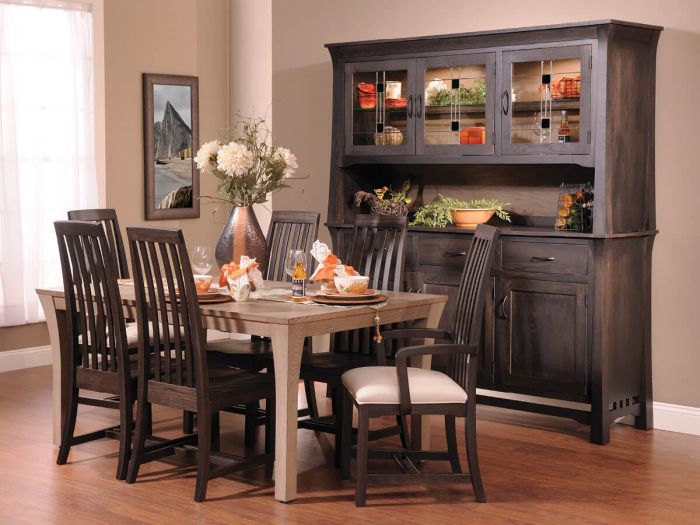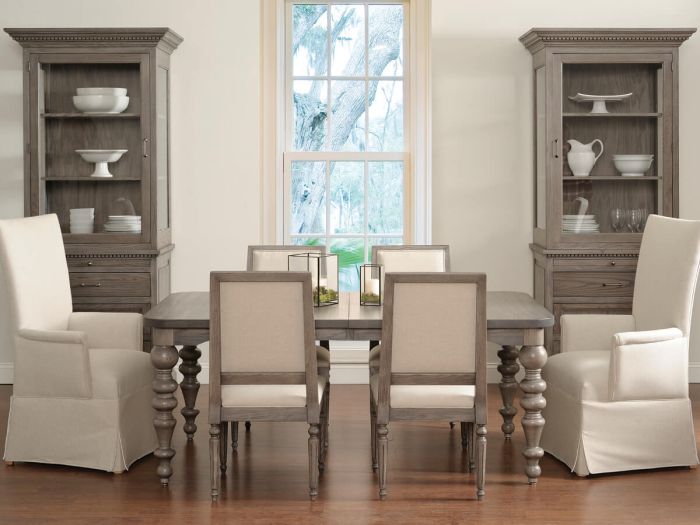Buyers Guide to Choosing the Right Dining Chairs for Your Dining Room
By Bailiegh Basham · October 19, 2021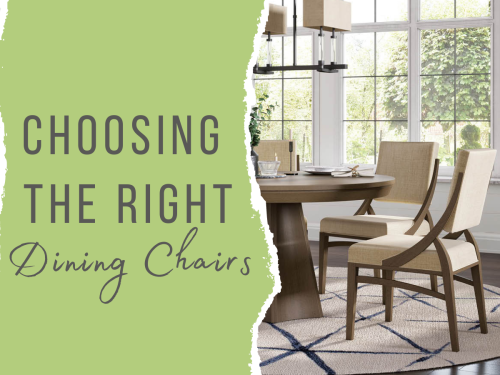
Picking The Right Dining Room Chairs Can Be Difficult
As a gathering spot, your dining room can take on all sorts of functions, so the chairs around your table need to suit your lifestyle, space, and style.
Is your dining chair size the right height for your table? Is it comfortable for the type of entertaining you like to do? Does its style complement my table? There are lots of questions to answer before you pick the right dining chair, and we’re here to guide you through the process.
While many dining room tables come with matching or complementing chairs, there are still occasions that might have you seeking a separate seating set. Perhaps you own a beloved family heirloom table, or fall in love with a standalone table perfect for your home. Maybe you just don’t like the chairs that come with your table, or you simply want to refresh your space with new seating. Maybe your family is growing, or you just moved into a larger house. Whatever the reason, you have lots of options (which can be overwhelming!), so we’ve put together some important considerations to help you find the perfect dining chairs and create a cohesive and functional space you’ll love.
Calculate How Many Dining Table Chairs You Need
While your table and chairs don’t have to match, your dining chairs do need to suit your table’s scale and style. Proportion and scale are key to a comfortable home. In this case, we’re talking height, legroom and the number of chairs you can fit around your table. For comfort and aesthetic, we recommend considering your table placement, table accessibility, and chair spacing.
Table placement:
In terms of space, try to leave 36” from the edge of your table to the nearest wall or piece of furniture, so people can easily push their chair back.
The more wiggle room between chairs, the easier it is for guests to maneuver and stand up from the table. However, distances greater than 36 inches will create an awkward, reserved atmosphere.
To make the most of a petite space, choose a round dining table. With pedestal tables, you can seat an extra guest because there are no table legs taking up floor space. Use armless chairs so guests can easily move their seats back.
Countryside Tip: Use masking tape or paper to “draw” out a table sized space on your floor. If you’re visual, this can be really helpful!
Table accessibility:
If you measure from the top of the table to the floor, a 30-inch height is the most common. From the top of the seat to the floor, dining chairs frequently range from 17 to 19 inches high. The average diner finds a distance of 10 to 12 inches the most comfortable, but it varies by the thickness of the tabletop, the height of the apron, seat composition (wood vs. upholstery), and by the size of the diner.
If your table has an apron, there should be 7" of space between the top of the seat and bottom of the apron. Pay careful attention to the “floor to apron clearance”, as this should give you an accurate spacing, and will ensure dining table and chair compatibility.
Finally, if you use dining chairs with arms at any type of table, make sure the tops of the arms don't brush or bump the bottom of the tabletop or apron.
Countryside Tip: You want 10-12 inches between the top of the dining chair seat and the bottom of the table, or 7 inches if your table has an apron.
If you’re trying to maximize seating, consider using a bench in place of chairs on one or both sides of your table. You can usually seat more people on a bench than the number of chairs you can fit along one side of your table. Whether it’s built into a corner or free-floating, adding a bench is one of the simplest ways to create a mix-and-match feel without going crazy.
Chair spacing:
Once you’ve chosen the correct height dining chairs, you’ll want to figure out how many chairs can fit around your table. The average dining chair width is 17"-20". We recommend leaving 24”-30” per chair for comfortable seating, which includes the width of the chair and about 6" on either side for elbow room.
A 72 in long table comfortably seats 6, a 96 inch table comfortably seats 8, and a 120 inch table comfortably seats 10. Of course in a pinch or for big gatherings or holidays, you can squeeze in a few more (we call this “family” dining vs. “formal” dining), but furnish your table for everyday comfort, not special gatherings.
Countryside Tip: The general rule of thumb is to allow at least 24 inches of space for every person gathered around your table.
The final scale concern when choosing chairs for a dining room table is the difference between the table height and the overall chair height. Make sure the backs of your chairs are taller than the top of the table.
Be sure to check out our complete dining table seating capacity guide as a source for more detailed instructions that vary based on the size and shape of the table you’re interested in.
How Do I Match Dining Room Chairs: Color
Gone are the days of predictable, matching dining room sets. Today, more eclectic dining sets are on trend. When done correctly, mixing your dining chairs is a great way to add a modern update to otherwise traditional dining room furniture.
There is no magic formula when it comes to mixing wood furniture finishes, but here are a few guidelines that may help. If you prefer a mixed and match look, you’ll have to put some extra thought into finishes. They should complement each other, but not match perfectly. In fact, contrast can make the space more interesting.
For example, a smooth Brown Maple table with a whitewash finish would pair nicely with warm Oak or upholstered dining chairs. This works because while the wood finishes are different, they both have a rustic, weathered feel.
Allowing various wood finishes to coexist can result in a more eclectic, layered look that lends the right amount of texture and depth.
What is so great about mixing and matching is that it really comes down to your own personal style - if you like it, go for it! After all, unique dining chairs can be the perfect opportunity to let your distinct style truly shine!
Countryside Tip: Stick to a maximum of two different finishes, or consider upholstery for a contrasting color.
How Should I Match Dining Room Chair and Table Styles?
When it comes to finding the style and aesthetic for your dining chairs, there are some questions that can help:
- Do you prefer something simple, or more elaborate?
- What style is your table?
- How often will you use your dining chairs?
- How much space do you have?
- What is the overall look and feel you’re going for?
Countryside Tip: It’s often easiest to start with the dining table first and then select the chairs that will coordinate it best.
When you have an understanding of the size and scale of chairs you’ll need, it’s time to decide on style. With so many styles available, you can really be creative when it comes to choosing your own stylish seat. Countryside Amish Furniture offers a wide variety of dining room chairs, so we encourage you to browse some examples to determine what would complement your space. You can choose between slatted, bow or ladder backs, solid backs, or even upholstered chairs.
If you’re going for an airy, lighter space, simple wooden chairs with clean lines and open backs might suit, and this would also work beautifully for rooms that are smaller. This creates a great opportunity to open up the look of your room and have some fun with colors and finishes.
A high backed dining chair will create a really visually impactful yet elegant look round your dining table, alongside offering lots of support when seated.
On the other hand, if you plan to use your dining room for socializing, or even to work, then upholstered chairs may be more comfortable to sit in for longer periods of time. The Parsons chair—an upholstered slipper chair with dining chair proportions—has simple lines that are neutral enough to work with most table styles.
Countryside Tip: In all dining-chair combos, the biggest concern is seat height. As long as that’s equal (so diners are all at the same level), you’re free to mix and match styles as you please!
Choosing tables and chairs with a common element usually ensures that they'll coordinate well. That common element can be the period, the color undertone of the finish, or the level of formality. It can even be a single design element, such as the furniture legs or feet. Although it can be chic to pair traditional chairs with a contemporary table, and vice versa, try to find pieces that share a common design element.
If you have a favorite design era or style, you can use it to create consistency in your dining set. The same is true for general interior design styles like transitional, farmhouse, industrial, or mid-century modern. For example, if all of your chairs are mid-century modern themed, the consistency gives you more freedom to mix in different shapes and colors. Once you’ve settled on a theme, it makes shopping for the perfect chair that much easier.
Don’t be afraid to mix and match for a more eclectic approach. One easy way to do this is to have a pair of matching end chairs that can contrast against side chairs for a strong look. If you do choose mismatched chairs, it’s important to make sure the one thing they have in common is that they’re the same seat height. This ensures you and your diners aren’t looking up or down at one another.
Still have questions? Our team would love to help. Just shoot your questions to sales@countrysideamish.com and one of our sales consultants will get back to you quickly. Give us a call at 888-297-4555, chat with us online, or leave us a comment below!
Ready to customize your new dining furniture? Let's get started!

